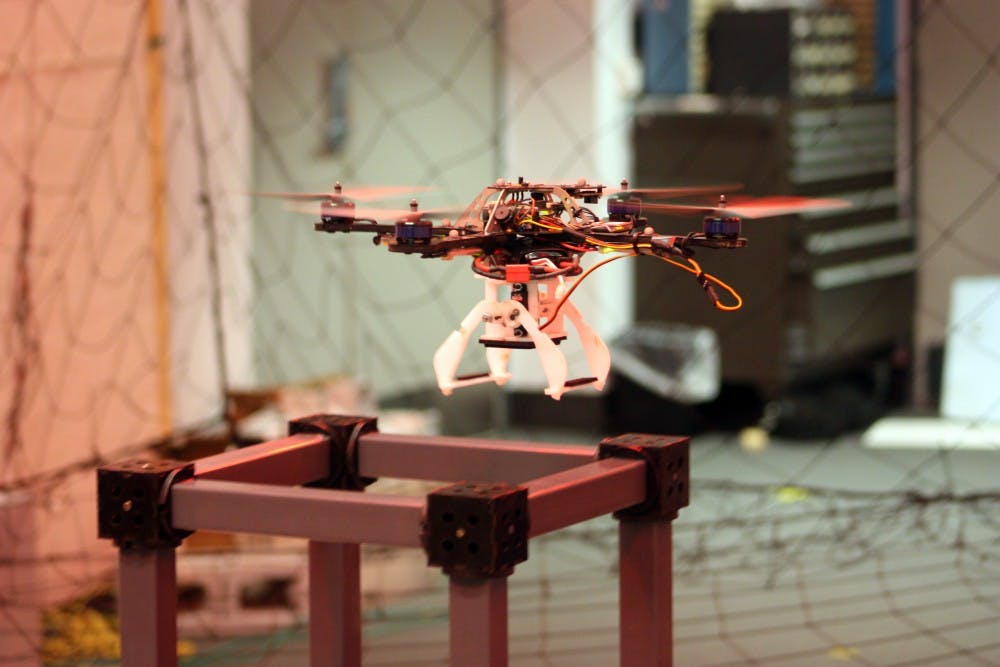In the General Robotics, Automation, Sensing, and Perception laboratories at Penn, a group of doctoral students have been working on creating robots that can act with all the precision and cooperation of a swarm of ants —in helicopters.
Mechanical Engineering and Applied Mechanics Ph.D. candidates Daniel Mellinger and Quentin Lindsey have been working with other team members on adapting robots and designing algorithms for two months. Their work yielded a swarm of flying robots that can build structures with almost no human assistance.
The robots are specially-adapted quad-rotors, which means they can maneuver precisely based on four rotating blades. The GRASP team adapted the robots so that they can cooperate to pick up and drop specially-made building materials using a claw-like grasp. Together, the robots build whatever structure is specified by the engineers in a main electronic controller.
The cooperative system was inspired by insect systems like ants or termites, according to Mellinger. Like these insects, the robots must learn to avoid each other and work together. Instead of communicating with each other as insects do in nature, however, these GRASP-designed robots work through the main controller which mandates workflow. Mellinger compared it to a fabricated “queen termite” that dictates commands.
The robots then build the desired structure using the unique magnetized building materials that are “specially designed to enable easy assembly,” Mellinger said, adding that they fly around and place blocks to form the skeleton of the structure.
The GRASP team uses motion-capture cameras and markers placed on the robots in order to keep track of them in space. According to Mellinger, these function like the motion-capture techniques used for special effects in movies. This system provides information that has helped the team learn how to properly control the robots.
In the future, Mellinger hopes that the robots could replace people in dangerous building situations, such as aerial lifting for the assembly of tall towers, and transport to hard-to-access sites like mountainous terrain or oil rigs.
In these situations, the robots could act as an initial phase and construct the preliminary scaffolding, making human construction work a later step in a less-dangerous setting.
These robots are “definitely a first step” towards a very ambitious “end goal,” Mellinger said.



